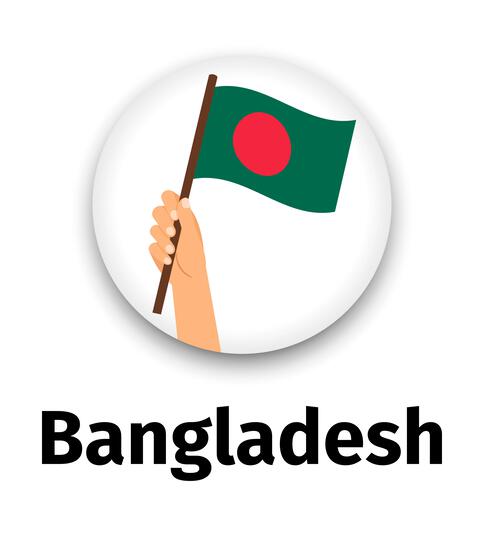Submitted by: Minhaz Samad Chowdhury
Independent Human Rights Defender, Bangladesh
Date: May 21, 2025
Contact: rightsmanbest@gmail.com |
Executive Summary
India, Bangladesh, and Pakistan—nations bound by a shared civilization—remain divided by historical trauma, political hostilities, and unresolved grievances. The partition of 1947, while establishing sovereign states, created deep wounds that continue to fuel conflict, inequality, and mistrust.
This proposal offers Vision 2050, a cooperative, peaceful, and phased approach to regional reunification—not through territorial consolidation, but through educational alignment, democratic strengthening, and civic trust-building. Inspired by the peaceful reunification of Germany and the EU integration model, the goal is to establish a "Great India"—a family of sovereign nations united by values, culture, peace, and prosperity.
1. Introduction
The Indian subcontinent, comprising India, Bangladesh, and Pakistan, shares centuries of intertwined history, culture, and aspirations. Yet, the legacy of partition continues to hinder regional cooperation and fuel instability. Recent escalations—between India and Pakistan over Kashmir, and deteriorating India-Bangladesh relations following Sheikh Hasina's fall—underscore the urgency of a new regional paradigm.
Vision 2050 calls for a phased, voluntary, and democratic process toward long-term harmony and regional integration, beginning with trust-building through education, good governance, and institutional collaboration—respecting full national sovereignty.
2. Current Regional Challenges
2.1 India–Pakistan Conflict (2025)
The April 2025 terrorist attack in Kashmir ignited violent escalations:
Cross-border artillery and drone strikes killed over 40 civilians.
Civilian evacuations and infrastructure damage spread from Jammu to Lahore.
Strikes on religious sites like a Bahawalpur mosque raised fears of sectarian backlash.
This volatile situation between nuclear-armed neighbors highlights the urgent need for structured de-escalation mechanisms.
2.2 India–Bangladesh Tensions Post-Hasina
Following the collapse of Sheikh Hasina’s government in August 2024:
Bangladesh's interim regime, under Muhammad Yushu, has realigned foreign policy away from India, creating new fault lines.
India’s refusal to extradite Hasina and the subsequent vandalism of a Bangladeshi diplomatic mission worsened relations.
Trade restrictions and rising communal tensions in both countries have disrupted supply chains and civic trust.
Combined with Pakistan’s internal unrest, the regional situation is precarious. A cooperative vision is now more critical than ever.
3. Objectives of Vision 2050
To eliminate enmity and foster trust among governments and people.
To develop a shared educational and cultural identity through a regional curriculum.
To strengthen democratic institutions and ensure good governance across the region.
To promote economic interdependence and sustainable development.
To establish legal safeguards and civic charters that guarantee dignity and rights across borders.
4. Education as the Foundation of Unity
A “One World, One Identity, One Curriculum” model will create shared consciousness while respecting national distinctions:
Shared History Curriculum: Integrate common historical narratives (e.g., Indus Valley, Mughal heritage, anti-colonial struggles) while sensitively addressing complex events like the 1971 war.
Civic and Moral Education: Promote values like non-discrimination, justice, and environmental responsibility.
Cultural & Student Exchange: Launch regional youth festivals, research collaborations, and cross-border programs.
Future-Ready Skills: Emphasise critical thinking, digital literacy, and climate resilience.
A South Asian Regional Education Council (SAREC) will oversee development and harmonisation.
5. Good Governance & Institutional Democracy
Strong institutions are essential to rebuilding trust. This includes:
Independent Oversight: Regional transparency monitors to combat corruption and abuse.
Inclusive Policy Making: Public referendums and consultations to ensure civic participation.
Equity in Representation: Proportional access for women, minorities, and rural communities to governance platforms.
We propose a Regional Governance Forum (RGF) to exchange best practices and harmonize legal and policy standards.
6. Economic and Cultural Collaboration
Interdependence fosters peace. Key initiatives:
South Asian Free Trade Agreement (SAFTA+): Rebuild trade ties, eliminate new restrictions, and promote shared growth.
Joint Infrastructure & Climate Projects: Energy grids, high-speed transit, and disaster mitigation partnerships.
Cultural Diplomacy: Sports events, heritage festivals, media co-productions, and joint tourism campaigns.
7. Legal Framework for Integration
A common legal vision will protect citizens and prevent state overreach:
Regional Cooperation Treaty: A binding peace and cooperation agreement among the three nations.
South Asian Charter of Civil Rights: Guarantee equal rights, educational access, and freedom of movement.
Conflict Resolution Council: Independent mediation body for inter-state and intra-state conflicts.
8. Implementation Roadmap
Phase 1 (2025–2030): Trust Building
Launch SAREC and RGF.
Initiate pilot student exchange and youth programs.
Begin de-escalation talks and joint climate/infrastructure projects.
Phase 2 (2030–2040): Structured Integration
Standardize curriculum and educational cooperation.
Sign the Regional Cooperation Treaty and Civil Rights Charter.
Deepen trade, infrastructure, and legal harmonization.
Phase 3 (2040–2050): Peaceful Reunification
Institutionalize regional forums and charters.
Celebrate milestones in cooperation and prosperity.
Consider referendums for political and administrative unification, if public will emerges.
9. Conclusion
As of 2025, the Indian subcontinent stands at a historical crossroads. War clouds gather over Kashmir. Ties fray between India and Bangladesh. Communal tensions and political transitions threaten peace. And yet—opportunity lies in shared dreams and mutual pain.
Vision 2050 is not a call for erasure of national identities, but for the rebirth of a greater civilizational unity. Reunification is not the end goal—it is the byproduct of sustained peace, human dignity, and trust.
We call upon the governments of India, Bangladesh, and Pakistan to take the first courageous steps:
Convene a South Asian Peace and Civic Dialogue Summit by 2030.
Protect civil society actors and human rights defenders advocating for regional peace.
Invest in the youth—our shared future—and empower them with truth, hope, and unity.
Together, let us reclaim our history—not through conflict, but through compassion.
For a peaceful, united, and prosperous South Asia.





.jpg)









No comments:
Post a Comment
Please validate CAPTCHA